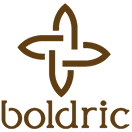
Unboxing a Premium Chef Knife: What to Expect and What to Avoid
Share
For any cooking enthusiast, opening the box of a premium chef's knife is an exciting moment. It does not matter whether you are making your initial step in acquiring a high-end purchase or extending to new items as your collection grows; the experience is a novelty mixed with due care being required. This chef knife guide explains what to expect when unboxing, the safe way to do it, the features that make these knives stand out, and what to avoid to protect both yourself and your investment.
How to Unbox a Chef Knife Safely
Knowing how to unbox a chef knife safely is essential because a premium chef knife is designed for precision and extreme sharpness. To make sure you open it without risk, you can do the following:
- To prevent the knife from slipping or coming into contact with something that could damage it, use a surface that is clean and dry.
- To avoid cutting the knife or the cover sheath, carefully and slowly open the outer packaging.
- Your hands should touch the handle of your knife, not the blade, as you grasp it by the handle.
Features of Premium Chef Knives
The features of premium chef knives are what set them apart from everyday kitchen knives. High-quality blades tend to involve:
- Steel of fine reputable tradition, like Japanese or German-made steel, where durability and edge holding are major factors.
- Forged construction leading to improved strength and durability.
- A long full tang down along the length of the handle, making it easier to balance and control.
These qualities make high-end chef knives both dependable and a pleasure to work with.
Chef Knife Blade Types and Uses
Understanding chef knife blade types and uses helps you get the most from your purchase. BestNeg common types include:
- The curved-edge Western chef knife is used in making rocking motion when chopping.
- The Santoku knife has a flatter blade that is best used in making very fine cuts and dices.
- The Kiritsuke knife, a knife that is normally used by expert chefs to make a delicate and sophisticated cut.
By knowing the purpose of each style, you can ensure your premium chef knife is used for the tasks it was designed to handle, which prolongs its life and keeps it performing at its best.
Knife Balance and Ergonomics
The quality of a good chef's knife in your day-to-day life is equally crucial as how sharp it is. Balancing the Knife and ergonomics will decide how safe and comfortable it will be in the long run. The balanced knife is where the weight is evenly distributed between both the blade and the handle, making it lighter to hold as well as more precise. The ergonomic handles allow one to maintain a natural grip on them and not strain after a long prep session. Unboxing and running a trial on the balance and how comfortable they feel will ensure you have a knife to enjoy for years into the future.
Signs of a Fake Premium Chef Knife
The growing popularity of high-end chef knives has unfortunately led to counterfeits entering the market. Knowing the signs of a fake premium chef knife can help you avoid disappointment. Look for:
- Unseemly finishing, careless fixation of the handle, or showing glue.
- Branding, which is misspelled or fonts on the blade or packaging are not correct.
- Steel that is lighter or bendable easily.
In case you detect any of these symptoms when opening the package of the knife, it is advisable to get in touch with the manufacturer before operating the knife.
What to Expect When Unboxing a Premium Chef Knife
When you open the box of a premium chef knife, you can expect a presentation that reflects its quality. The packaging is usually rigid and attractive, which makes it lovingly handsome, carries the knife through transportation. On the inside, there may be:
- A carry case, or a place to store the blade to keep it safe, or have a cover/ sheath.
- A rag to keep the blade polished.
- Details concerning the functions and various types of blades of a chef's knife.
- It has a satisfying feel to it, and the quality and precision of the craftwork make you enjoy the piece even before you cut it.
What's not to do when unboxing
It is better not to make the following mistakes to save your own and your premium chef knife at the same time:
- You may cut and scar as you touch the blade itself.
- The blade is very easily bent or the handle broken simply by throwing the knife to the ground, even the immediate one.
- Not reading the care instructions in which washing the same might comprise a part, washing as soon as possible.
Final Thoughts
Unboxing a premium chef knife is an introduction to a tool built for precision and lasting performance. By following this chef knife guide, you can unbox it safely, recognize its quality features, and avoid counterfeits. A well-taken care of knife will last very long performing kitchen duty.
